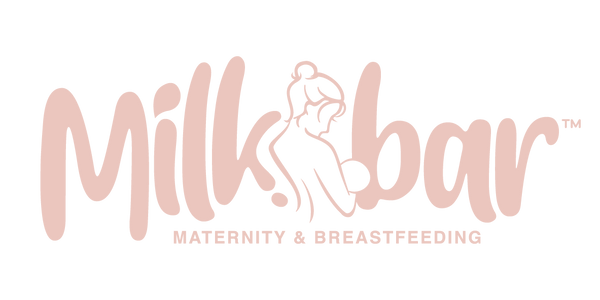
Storing Breastmilk Safely
Share
Congratulations on your new journey as a mother! As you navigate the world of breastfeeding, you'll likely find yourself faced with various questions and concerns, one of which is how to safely store your precious breast milk. Whether you're planning to return to work, want to build a freezer stash, or simply need a way to store milk for occasional use, understanding the proper techniques for storing breast milk is essential.
In this blog, we'll explore everything you need to know about safely storing breast milk, from the recommended storage containers and temperatures to the duration for which breast milk can be stored. We'll address common concerns and debunk myths surrounding breast milk storage, providing you with evidence-based guidelines that will give you peace of mind.
So, whether you're a new mom just starting your breastfeeding journey or an experienced mom looking for a refresher, join us as we delve into the world of safe breast milk storage. By the end of this blog, you'll have all the knowledge you need to confidently store your breast milk and ensure that your baby continues to receive the wonderful benefits of breastfeeding, no matter the circumstances.
Let's dive in and discover the best practices for safely storing your liquid gold!

Choose the Right Storage Containers:
When it comes to storing breast milk, the right containers make all the difference. Opt for BPA-free plastic bottles or storage bags specifically designed for breast milk storage. These containers are sterile, durable, and easy to use.
Cleanliness is Key:
Before expressing or handling breast milk, wash your hands thoroughly with soap and warm water. Additionally, ensure that all storage containers, breast pump parts, and accessories are clean and sanitized. Use hot, soapy water or a dishwasher to clean these items, and allow them to air dry on a clean towel.
Label and Date:
To maintain organization and ensure the freshness of your breast milk, it's essential to label each container with the date of expression. This practice allows you to use the oldest milk first, preventing waste.
Store in Small Portions:
Consider storing breast milk in smaller portions, such as 60-120 ml per container. This way, you can thaw and use only the amount you need for each feeding, reducing the risk of waste.

Storage Temperatures:
The temperature at which breast milk is stored plays a crucial role in maintaining its quality. Here are the general guidelines:
- Room Temperature: Freshly expressed breast milk can be stored at room temperature (between19-26°C) for up to 4 hours. However, if the room temperature is above 26°C, the milk should be refrigerated immediately.
- Refrigerator: Breast milk can be safely stored in the refrigerator (at or below 4°C) for up to 4 days. Place the containers toward the back of the refrigerator, where the temperature is most consistent.
- Freezer: If you plan to store breast milk for a longer duration, use the freezer. It is recommended to store milk in the freezer compartment of a refrigerator with a separate door or a standalone deep freezer. Breast milk can be stored in the freezer for:
- Up to 6 months in the freezer compartment of your refrigerator
- Up to 12 months in a stand-alone, deep freezer
Thawing Breast Milk:
When it's time to use stored breast milk, it's important to thaw it safely to preserve its quality. Here are a few thawing methods to consider:
- Refrigerator: Place the container of frozen breast milk in the refrigerator and allow it to thaw slowly. This method usually takes around 12 hours, so plan ahead.
- Warm Water Bath: If you need to thaw breast milk quickly, you can use a warm water bath. Submerge the sealed container in warm water (not hot) for a few minutes until it reaches room temperature. Never thaw breast milk in hot water or the microwave, as this can create hot spots and destroy valuable nutrients.
Safety Precautions:
To ensure the safety of your baby, it's important to follow a few additional precautions:
- Avoid adding freshly expressed breast milk to already frozen milk. Instead, cool the fresh milk in the refrigerator first and then combine it with other cooled milk before freezing.
- Do not refreeze thawed breast milk. Once it has been thawed, use it within 24 hours. Discard any remaining milk that your baby doesn't consume within that time frame.
- Avoid shaking breast milk vigorously. Instead, gently swirl the container to mix the separated fat layers.
- If you're unsure about the quality or safety of stored breast milk, use your senses. Look for any changes in color or smell. If it appears or smells off, discard it.
You can purchase our handy fridge reminder magnets here!
Happy Pumping Mama! x
